12 Common Mistakes Everyone Makes With Cherries
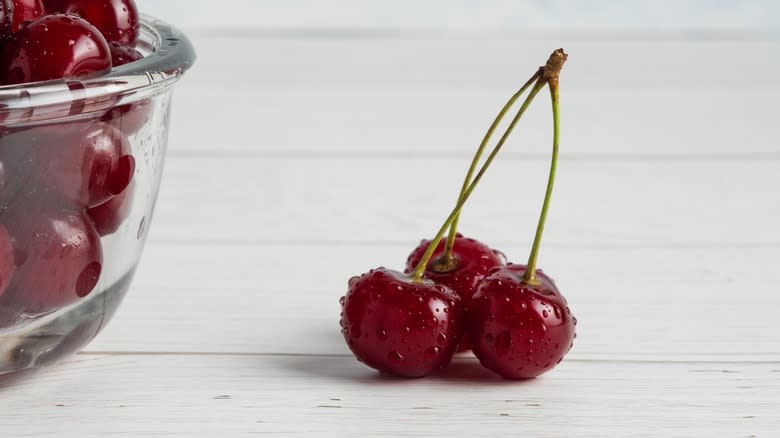
We don't know many people out there who don't like cherries. These fruits are a quintessential part of American culture and have been since the first cherry pits arrived in the country in the 1600s. Cherry pies, cakes, and tortes are just some of the best cherry dessert recipes out there that Americans enjoy year-round. So you'd think we knew how to cook with them by now, right?
Wrong. Well, not entirely -- but you'd be amazed by how many mistakes people make with this simple stone fruit. Cherries are beloved for their sweet, rich flavor, but they're also prone to sourness, and picking the wrong variety or preparing them in the wrong way can make your meal a lip-puckering disaster. The pits themselves can also cause a major issue: Forget to take them out and you end up with a broken tooth; take them out in the wrong way, and you end up with a piece of destroyed fruit. There's also the question of what we do with our cherries once we've prepared them -- it's easy to stick to using them in traditional recipes, foregoing experimentation and ultimately missing out on interesting, unconventional cherry dishes. All of these errors are things that we're determined to put a stop to.
Read more: 12 Vegetables And Fruits That Used To Look Very Different
Buying The Wrong Variety For Your Recipe
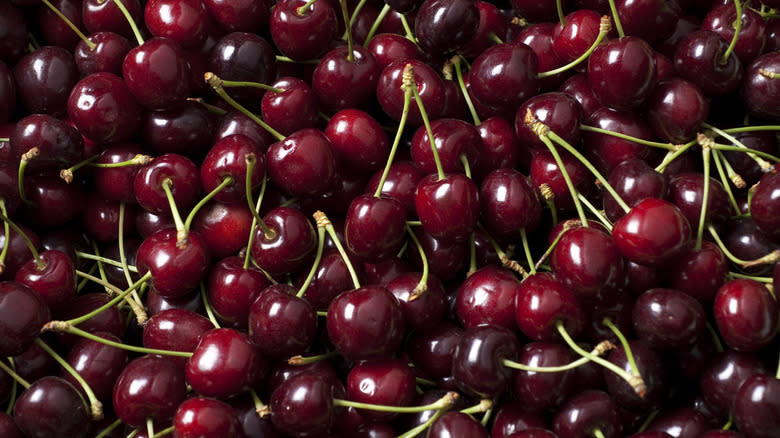
We generally don't think of cherries as being that diverse, but like any fruit, there are loads of different varieties -- and all of them have their own flavor, texture, and shade. These factors can make or break your recipe, and if you find that you've brought home the wrong type for your dish, you could find it to be wildly disappointing.
As such, the best thing to do is to double-check your recipe for which variety you need – but you should also get familiar with each different cherry type. For sourness, Montmorency cherries are the one you want: With a mid-red shade and a tart flavor, these are usually canned or are used in pie fillings, where their sourness is balanced out with sugar, creating a flavor explosion. Morello cherries, with their purplish color and sour flavor, are also commonly used in pie fillings and preserves. If you want sweetness, grab some Bing or Rainier cherries, the former deep-red and plummy, the latter two-tone and juicy. Alternatively, Chelan cherries are the type you need for a totally sweet snack, with an attractive mahogany tone and a super-high sugar content.
Pitting Them Incorrectly
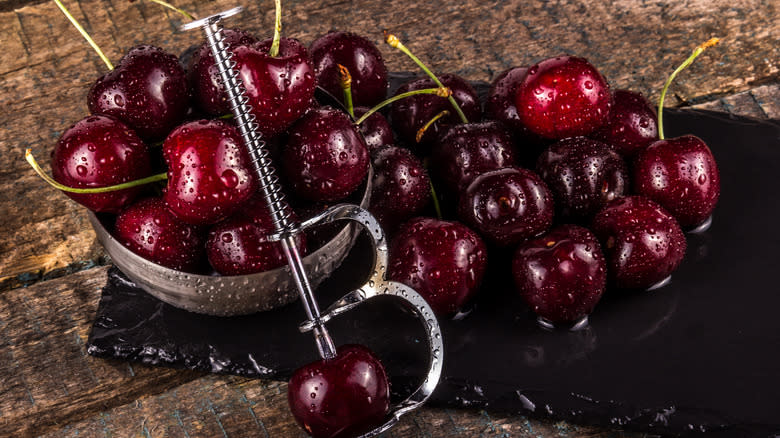
There's no getting around it: Pitting cherries can be a challenge. With one slip of the knife, you can end up destroying the fruit entirely (and causing yourself some damage in the process). Pitting cherries can also be tricky if your fruit isn't at perfect ripeness, which can lead you to, again, mashing up your fruit in pursuit of the stone inside.
To pit cherries, you should always make sure your fruit is ripe and soft, without being mushy. The more unripe it is, the harder it will be to cut into the flesh and retrieve the pit. You should also make sure your technique's on point. You can pit cherries in a flash with a super simple straw hack. You simply place your cherry on the top of an open bottle with a fairly narrow screw top, so that it balances on top. Then, take a straw, and push it into the middle of the cherry -- this will push the pit into the bottle underneath. You might find that using a metal straw is best here as if your cherries are especially firm, a plastic or paper straw won't last long. You can also, of course, buy a cherry pitter, a tool specially designed for this task.
Forgetting To Check Their Stems
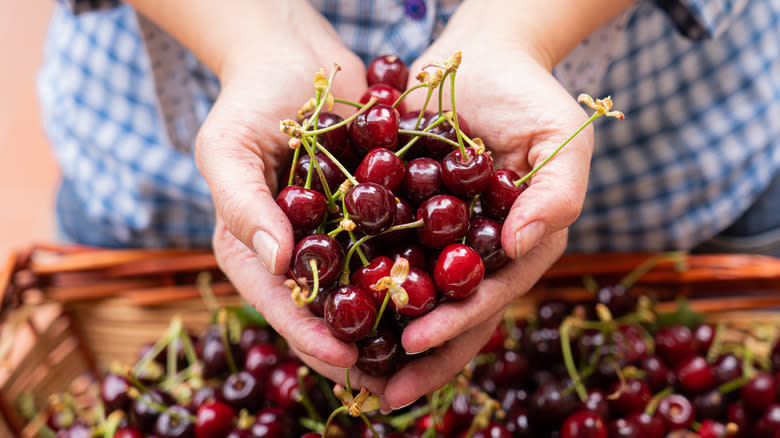
Assessing whether your cherries are ripe is arguably the most important factor in their success in your recipe. If you don't know what a ripe cherry looks like, you may end up bringing home a bag that's still a few days off being its best and have to wait to make your recipe. On the other hand, buy cherries that are too ripe and you'll end up with squishy, bruised fruit that tastes overly developed and slightly fermented.
Checking the stems is the first thing you should do. Your cherry stems should be fresh, green, and flexible, which indicates that they're still well-hydrated and have been picked recently. If the stems are brittle and brown, it's a good sign that they were picked longer ago, and could be at risk of going bad sooner. In addition, always check the cherry's flesh. Unripe cherries are too firm and will have an undeveloped color, whereas overly ripe cherries will begin to pucker and feel too soft. Ideally, you want fruit that's slightly firm to the touch, shiny, and smooth.
Skipping The Sugar With A Cherry Filling
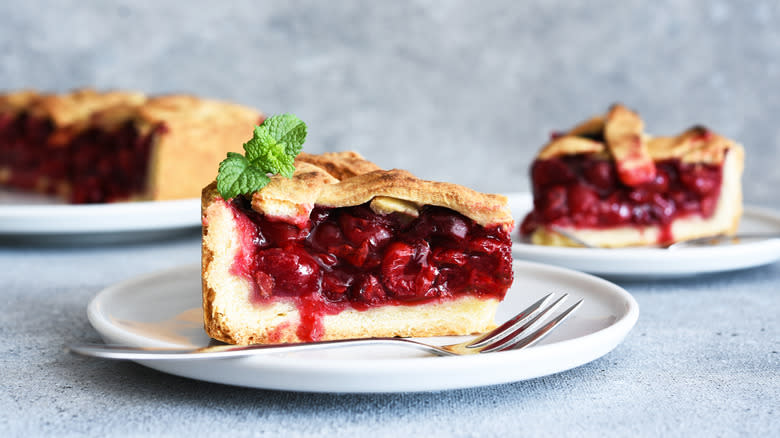
When you're making a cherry pie, don't kid yourself: You can whip up the best pastry the world has ever seen, but all people are going to remember is the filling. More specifically, what people will remember is how sweet or sour it is -- and here's where the trouble starts. Both canned and homemade pie fillings can be way too sour, and not contain enough sugar. Forgetting to taste-test your filling before you put it in your pie can lead to some kitchen disasters, and not adding enough sugar will leave your guests gagging.
So, always check your pie filling before you spoon it in, and balance it out with slightly more sugar than you think. It's always best to do this slowly, by adding a tablespoon at a time, stirring it in and giving it time to dissolve, and then tasting it. If you're worried about your cherry pie filling before overly sugary, opting for an alternative sweetener to white sugar, like brown sugar, molasses, or honey, can give it more depth and some notes of caramel.
Freezing Them Poorly
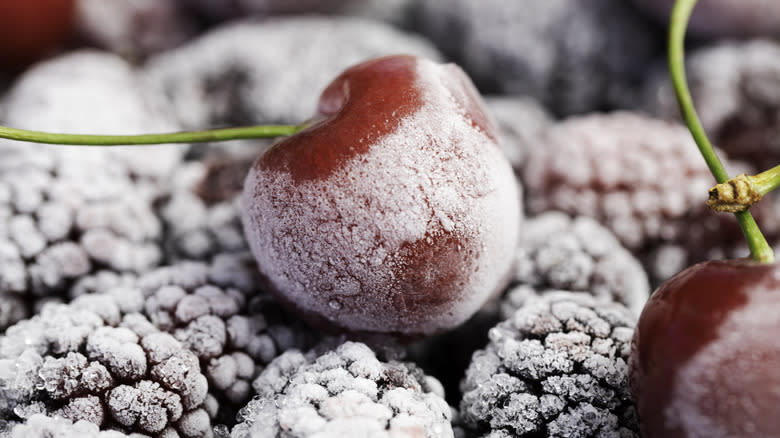
You might not think it, but cherries freeze surprisingly well. When done correctly, they can last for up to a year in your freezer, and while they might not have the same texture as when they went in, they'll still be delicious and juicy when you thaw them. This depends entirely on how well you freeze them, though, and failing to prepare them properly can ruin your cherry-freezing endeavors before they've even begun.
To freeze cherries, remove their stems, wash them, and then blot them dry with a paper towel. The blotting stage is important, as you don't want them to go into the freezer with any excess moisture. Once they're totally dry, place them on a cookie sheet, spacing them apart so they're not touching each other, as this can cause them to stick together in the freezer. Freeze them for several hours, before pulling them out and placing them together in a container or Ziploc bag, to make storing them easier. You may also find it useful to pit your cherries before you freeze them, especially if you're planning on using them in a cherry smoothie later down the line, which will require you to throw them straight in your blender from the freezer.
Forgetting To Add A Thickener
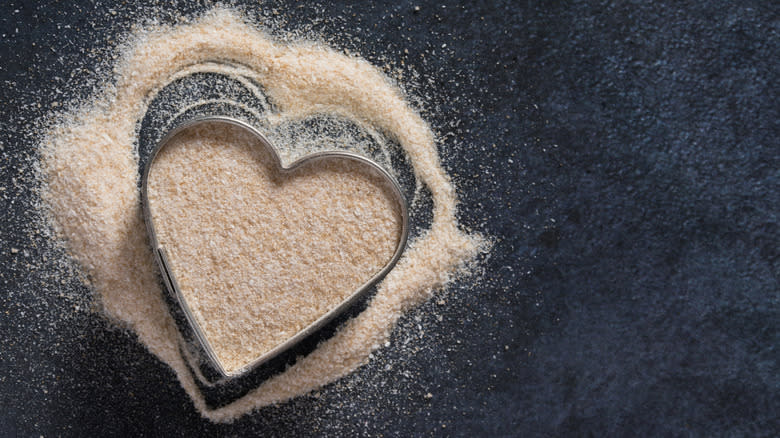
Cherry pie fillings, jams, and preserves are incredibly popular, but nailing their consistency can be harder than you think. A lot of people assume that cherry mixtures will just thicken on their own. However, the truth is that, due to their relatively low pectin content (the soluble fruit fiber that works to bulk up fillings and jellies), these mixtures will stay pretty runny unless you add an external thickener to them.
Luckily, there are loads to choose from. Arguably the easiest way is to buy some powdered pectin and stir some into your mixture. You can also add some cornstarch, which is particularly useful for cherry pie fillings, and a little all-purpose flour or tapioca starch can also work wonders here. Using more sugar can also help to thicken your cherry jams and fillings. Alternatively, when cooking it, keep it on the stove for slightly longer than you think. The more your cherry mixture cooks down, the thicker it will be, and the more intense and sweet its flavor will become.
Washing Your Cherries Before Storing Them
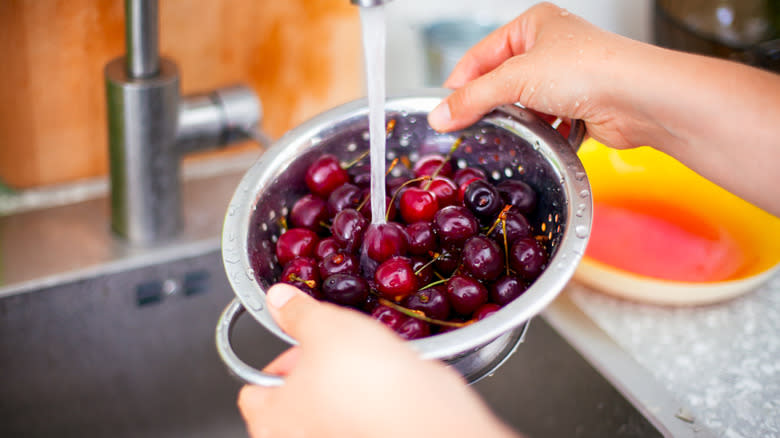
Washing your fruit before you eat it is essential, to get rid of any potential contaminants, pesticides, leftover dirt, and germs. With cherries, though, you shouldn't be too hasty. Washing cherries before you store them can cause them to bring excess moisture with them into the fridge. The cherries will absorb this moisture and they'll deteriorate faster in your fridge, going mushy by the time you want to eat them.
As such, it's important to hold off on washing your cherries until right before you want to use them. To keep things safe, always keep your cherries separate from other food items in your fridge, to avoid the risk of cross-contamination. It can be useful to place them between two layers of paper towel: Not only will this keep the cherries dry, but it will also help to limit their contact with other food. When you're ready to wash them, you can simply rinse them under running water, although if you like you can soak them in a vinegar or baking soda solution, to clean them even more thoroughly.
Assuming Cherries Can Only Be Used In Desserts
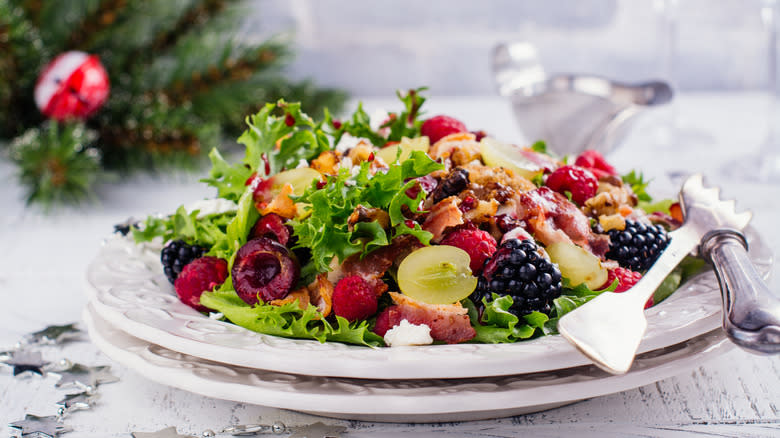
Cherries are the centerpiece of many desserts, and there's no question why: Their sweet-sour flavor balance and deep, jammy taste give sweet foods a huge amount of depth, and their ruby-red tones make them visually appealing. However, all of these factors can also benefit savory foods, and a key mistake that people make is forgetting to use their cherries in more interesting ways.
Cherries are especially good in salads, where they provide a pop of sweetness and an acrid edge that pairs well with salad leaves and cheeses, and bolsters grains. Try a cherry-lentil salad, pairing dried green French lentils with fresh pitted cherries, brightening it all up with fresh basil and scallions, and tying it together with a red wine vinegar dressing. As an accompaniment to meat, cherry chutney is second to none, and when combined with orange juice, bourbon, and mustard, the cherries take on an almost mind-blowing complexity. You can also pair this cherry chutney with cheeses or other deli meats -- try placing it in the middle of a charcuterie board, and watch your guests go wild.
Eating Too Many Cherries In One Go
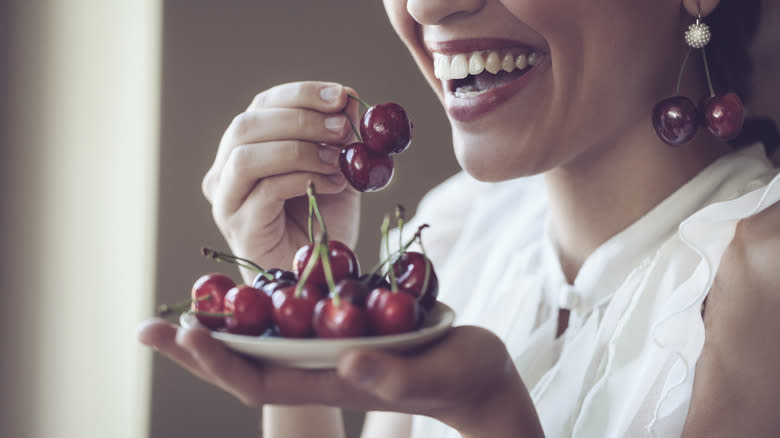
It's easy to get ahead of yourself when eating cherries, and before you know it, you've worked your way through half a bag. Then, suddenly, your stomach starts to rumble, and before you know it... Well, we'll spare you the imagery.
If you're familiar with this feeling, though, you may have fallen foul of the cherry's laxative effect. Cherries have a specific combination of sugar alcohols, salicylates (a natural plant chemical), and fiber. The first two of these, sugar alcohols and salicylates, can have a particularly acute stimulating effect on the gastrointestinal tract, and cause you to end up having to run to the toilet, fast.
Some people may not find that cherries are that stimulating, but if they're making you poop, it's important to reduce your servings. Try to keep to eating around a ½ cup at a time. If you find that eating this amount doesn't have any effect, you might be able to up your intake. The key is to find the right balance for you, and avoid eating them in combination with other foods high in these substances like blueberries, pears, and apples.
Forgetting To Dry Your Excess Cherries
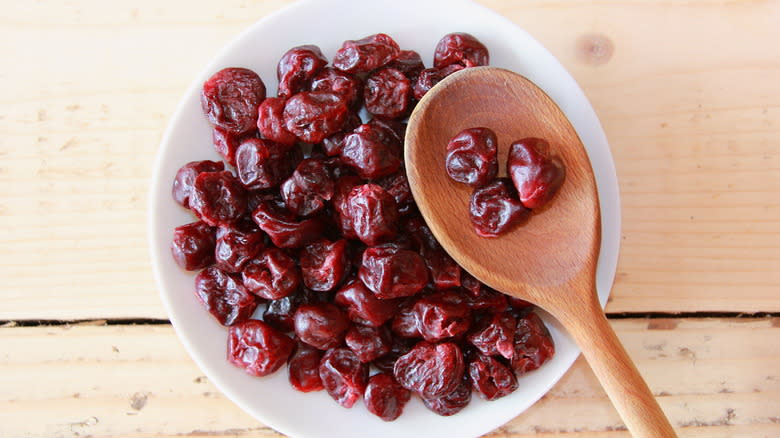
It can be difficult to ignore the allure of fresh fruit, especially if it's got a good price. If you've bought too many cherries at the store, though, consider drying them instead of throwing them out. There are several simple ways to dry fruit without using a dehydrator: Pretty much any fruit can be oven-dried easily, and cherries are no exception. Their flavor concentrates when they're dried, turning them into the perfect snack or dessert topper.
Drying cherries allows you to extend their shelf life for a long time. At room temperature in a cool, dark place, dried cherries can last for up to a year, and may stay edible for even longer when kept in the fridge. Drying them is a doddle, too. You simply need to pit your cherries, before slicing them in half (or leaving them whole) and spreading them out on a baking sheet. Then, place them in a low oven for several hours, checking on them now and again to ensure that they're not burning, and turning them over periodically. Once done, allow them to air dry, before placing them in a jar or Tupperware box.
Wasting Their Pits And Stems
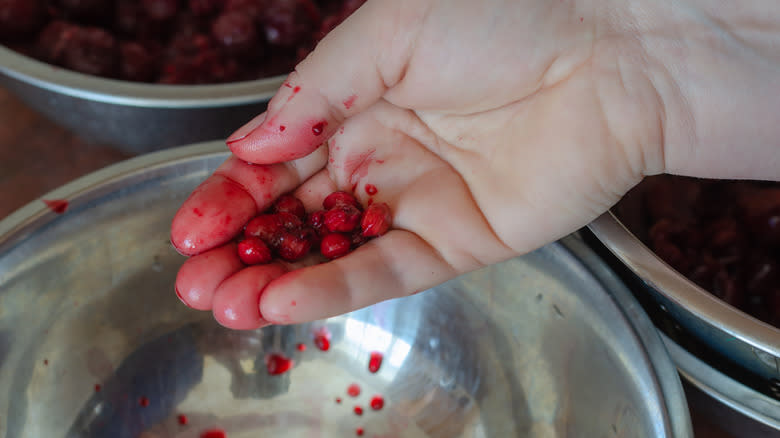
You can get a surprising amount of mileage out of cherry pits and stems -- and yet, so many people fail to remember this and throw them out. Doing this can cause you to miss out on some exciting uses, and contribute to more food waste than you might like. Your cherry stems can be put to good use in your alcoholic (or non-alcoholic) beverages, by making a cherry stem syrup. Dry out your cherry stems in a super-low oven until they turn dark brown, before grinding them up and boiling them with water. You're left with a bright red cherry tea, which you add sugar to, producing syrup.
Cherry pits can also be used to make syrup, by boiling a cup of pits with two cups each of sugar and water. You can also use them to make an intense-tasting liqueur. Throw your leftover pits into a jar with clear alcohol and a few rose geranium leaves. Allow everything to macerate for around a month, before you drain off the alcohol and stir it with some cherry syrup, to add sweetness and depth. Enjoy in moderation -- it can have quite a kick.
Buying Or Using Cherries That Have Gone Bad
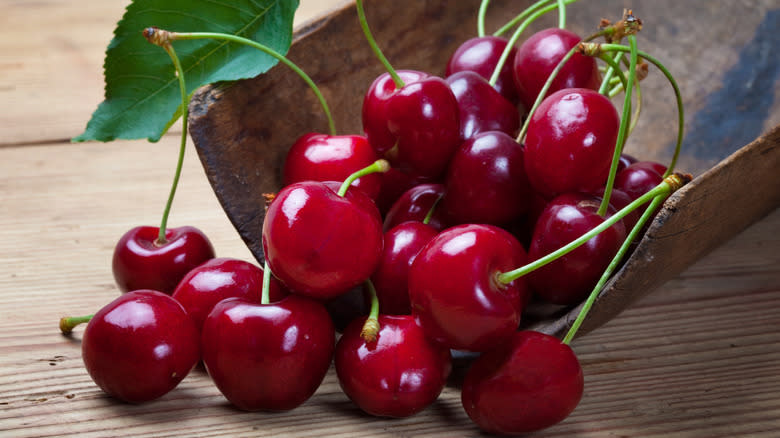
Nothing is as disappointing as getting your cherries home from the store and realizing that they've gone bad. Unfortunately, this is all too easy to do, especially if you don't know the telltale signs. Cherries that have gone bad will no longer have the smooth, shiny texture that fresh cherries do, and instead will begin to look pruned and withered. They will also lose their firmness, and turn from plump and bouncy to soft and squidgy.
Overly ripe cherries will also lose their healthy glow, turning from shiny to a dull color. They may also begin to smell strange, with a sour, fermented odor, and could start to ooze and leak. While cherries can last for a good amount of time in the fridge, they'll generally start to go bad within about 10 days. At room temperature, they'll go bad quicker. Storing them properly, by keeping them away from excess moisture and in a well-ventilated, cool space, can help maintain their shelf life for longer. While your cherries could be okay to eat if they're a little soft or too ripe, you should always throw them away if you have any doubts about their freshness.
Read the original article on Daily Meal

